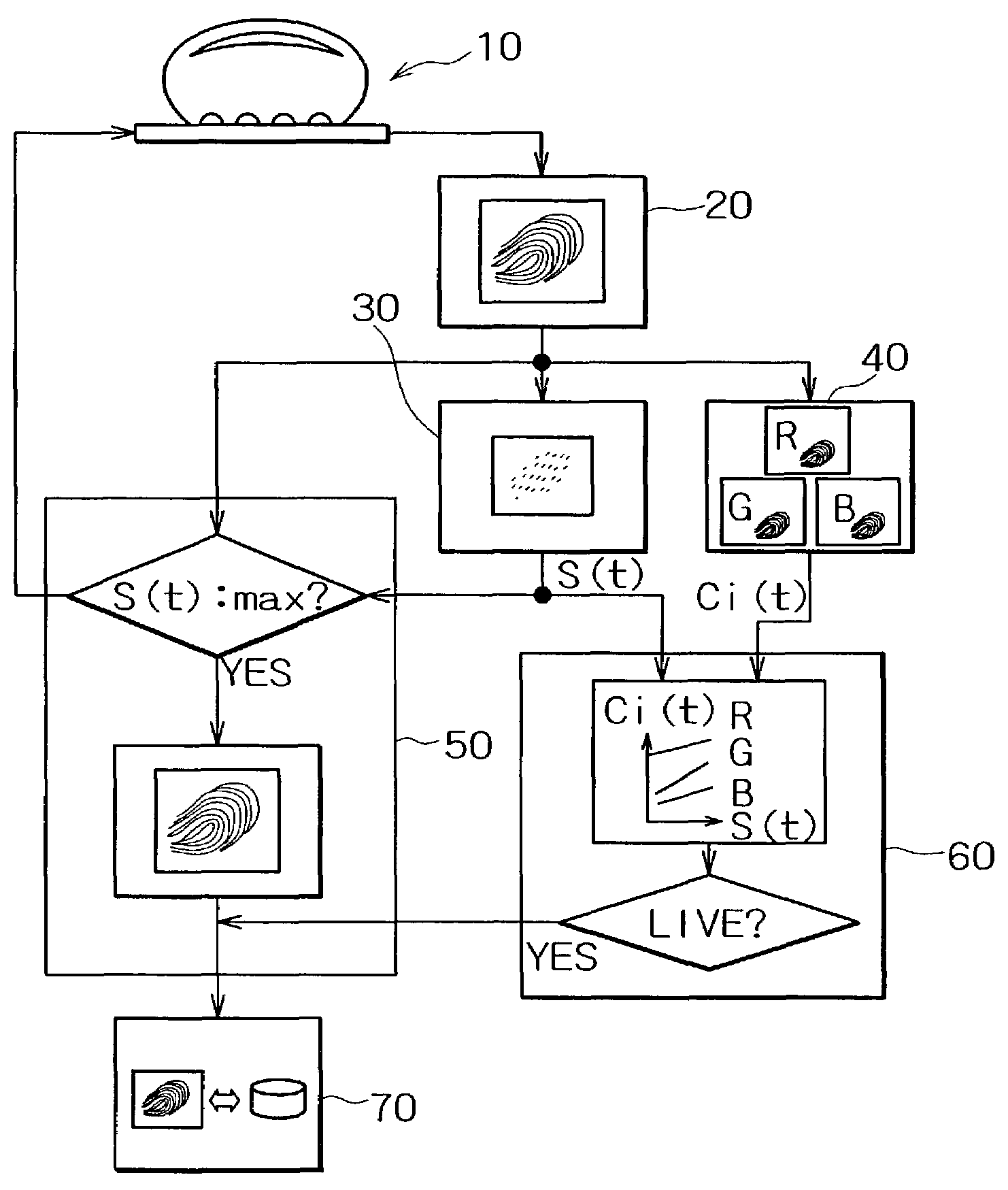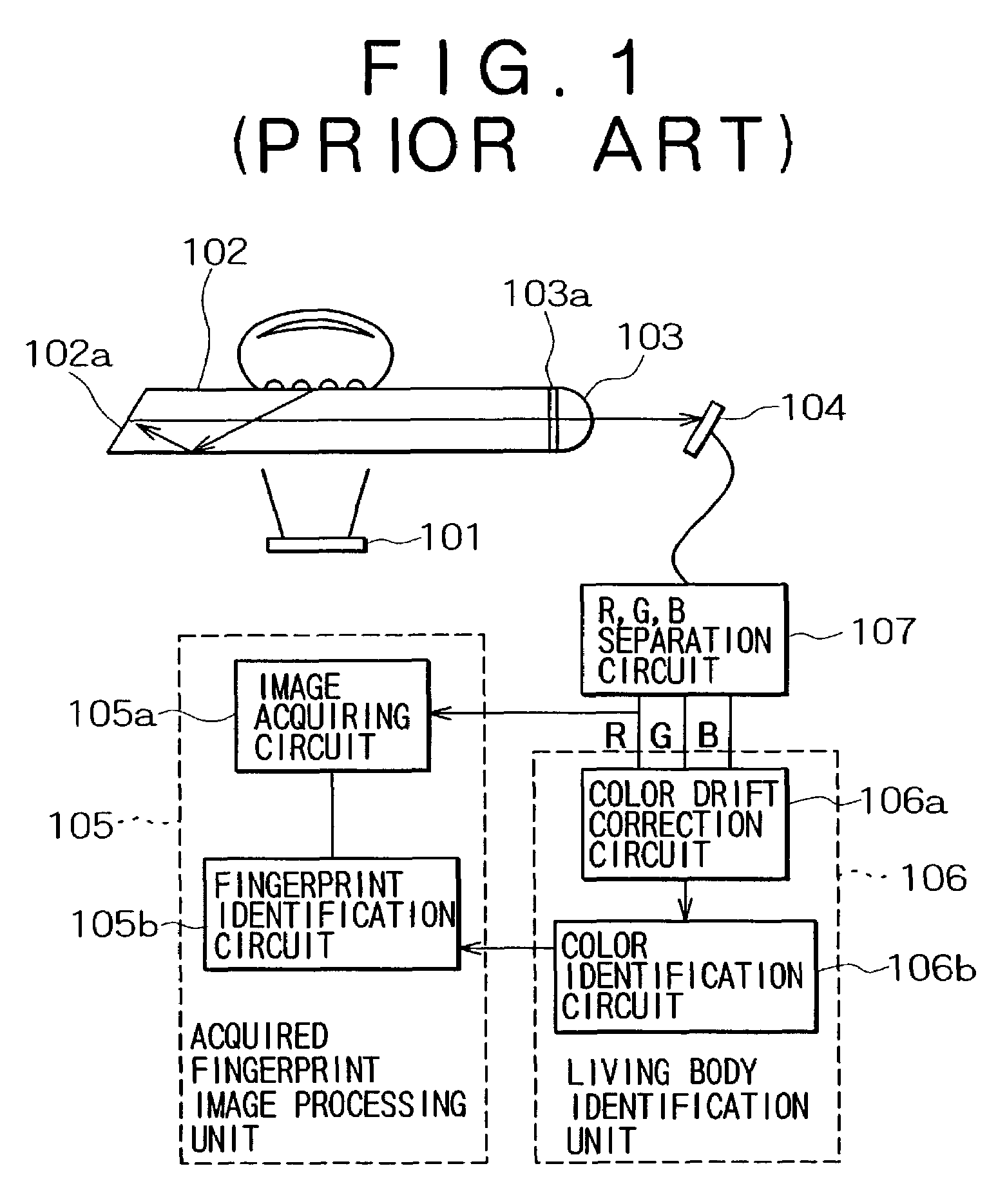Fingerprint image input device and living body identification method using fingerprint image
a fingerprint image and input device technology, applied in the direction of testing/monitoring control systems, instruments, program control, etc., can solve the problems of difficult to identify living bodies with high reliability, devices making the wrong decision that the live finger is dead, and unauthorized access to computers, etc., to achieve high reliability
- Summary
- Abstract
- Description
- Claims
- Application Information
AI Technical Summary
Benefits of technology
Problems solved by technology
Method used
Image
Examples
application example
[0058]The following is an example of a partially modified configuration of FIG. 2 for acquiring a series of finger motions seen from the moment the finger touches the sensor surface and the moment it leaves the sensor. In this configuration, a control signal for halting image acquisition is sent to the color image sensor 10 at the moment the finger has left the sensor surface, or the fingerprint area becomes “0” again, not the moment the area of the extracted fingerprint image becomes a maximum.
[0059]In this way, a series of fingerprint images obtained from the moment the finger has touched the sensor and to the moment it has left the sensor are acquired, and area signal S(t) and average color signal Ci(t) are extracted from the obtained fingerprint images. For producing area signal S(t), the respective fingerprint images of RGB colors are provided by averaging the pixel values of RGB and then converted the original images into two-level fingerprint images of gray-scale. Then the nu...
PUM
 Login to View More
Login to View More Abstract
Description
Claims
Application Information
 Login to View More
Login to View More - R&D
- Intellectual Property
- Life Sciences
- Materials
- Tech Scout
- Unparalleled Data Quality
- Higher Quality Content
- 60% Fewer Hallucinations
Browse by: Latest US Patents, China's latest patents, Technical Efficacy Thesaurus, Application Domain, Technology Topic, Popular Technical Reports.
© 2025 PatSnap. All rights reserved.Legal|Privacy policy|Modern Slavery Act Transparency Statement|Sitemap|About US| Contact US: help@patsnap.com



